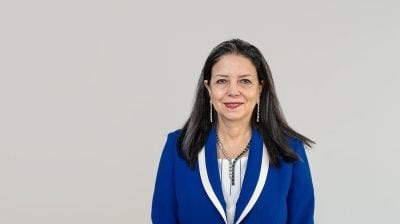African Creative Industries: Art coming in out of the cold. African art has never been in greater demand, both from domestic buyers as well as international collectors and institutions. Alexa Dalby reports.
African art expert Ed Cross, of www.edcrossfineart.com and www.auctionroom.com, comments on the rise of interest in African contemporary art, “While it’s still a ‘young’ market we have seen a sea change over the last few years and 2013 was, without doubt, a breakthrough year. With a large number of major firsts including the Tate Modern’s first shows for two contemporary African artists, the first London Art Fair for African contemporary art 1:54 which was hugely successful, the first online auctions for African Contemporary Art from The Auction Room and Artnet.
“Other firsts for African art include: the first time an African country, Angola has won the Golden Lion award for its Pavillion at the Venice Biennale: the founding of GAFRA Cork Street’s first gallery devoted to Contemporary African Art and finally the announcement in December 2013 that for the first time, the Venice Biennale 2015 will have an African as its chief curator – Nigerian Okwui Enwezor.
“Enwezor’s appointment shows just how far things have changed – it is ironic but no coincidence that he wrote about the phenomenon of globalisation in his 2009 book Contemporary African Art Since 1980: ‘Every indication we have of the current situation of global contemporary art reconfirms the important impact of geopolitical reorganisation of the global order.’ The growth that we are seeing now in the African art market is very much a consequence of these factors – which have both affected the global ‘gaze’ but also lead to the energising and self empowerment of artists from areas hitherto largely ignored.”
The market is driven by demand from the private sector for individual artists rather than any particular category. In global terms the African market is still very small – the global value of the market is put at $56bn – and there are few statistics available nationally. With a few exceptions for the most well-known artists, individual prices are still quite low compared to global prices but growing popularity has driven up prices significantly. Bonhams, the internationally known London-based auctioneers, has been key in developing contemporary African art for the international market, having started its auctions five years ago and is now reaping the benefits of the effort put in.
In 2013, its annual Africa Now auction included over 200 works by 66 artists, mostly from Nigeria, Ghana and Benin, raised $2.1m and set 21 world records for prices achieved. However, auction prices and indexes present the success of a particular section of the market and the ‘unsolds’’are not taken into consideration.
African art fairs are springing up. Art Basel – the Olympics of the art world – has an African section. Frieze London, the international contemporary art fair, consisted last year of 152 contemporary art galleries, two hailing from Africa, double the number of participating African galleries from last year, when none attended.
1:54, a smaller fair with 17 participating galleries, is the first contemporary African Art Fair founded by market developer Touria El Glaoui and was also held in 2013. Designed by architect David Adjaye, participating galleries included Jack Bell Gallery, ARTLabAfrica, and Galleria Continua. The first East African art auction held by Circle Art Agency in Nairobi featured 47 works from 43 artists from six countries: 90% of the works sold for total of $216,000 against an estimate of $201,000. Over half sold to Kenyans.
Auctions are online too. Ed Cross comments, “One of the gratifying aspects of curating The African Art Auction last year was witnessing the emergence of Far Eastern buyers for key lots including El Anatsui’s Coins on Grandma’s Cloth (which sold for $50,000) – we also saw European buyers buying works previously mostly associated with Nigerian collectors. It was good to see collectors acquiring works across the price ranges and mediums and a number of artists, among them, Mozambican Mario Macilau, Nathalie Bikoro from Gabon and Mamady Seydi from Senegal selling for the first time at auction.
“I expect to see a lot more African investors/collectors along with others from all over the world, getting in to the business of creating meaningful collections of African contemporary works – with prices still very low in comparison to other areas of the art market and with the projected growth in African economies. It is in my view a no-brainer that the value of art and culture from Africa will appreciate substantially – as it should. It’s long overdue!”
However, across Africa, as yet there is little or no government support for art, still only a few local art galleries and little art education. Governments have other priorities and it is left to the private sector.
Want to continue reading? Subscribe today.
You've read all your free articles for this month! Subscribe now to enjoy full access to our content.
Digital Monthly
£8.00 / month
Receive full unlimited access to our articles, opinions, podcasts and more.
Digital Yearly
£70.00 / year
Our best value offer - save £26 and gain access to all of our digital content for an entire year!
 Sign in with Google
Sign in with Google 



